- Used plant part
- Dried fruits. The aroma and, if present, also the pungency reside in the mostly brown fruit wall (pericarp,The Korean species Z. schinifolium has aromatic seeds which are preferred for usage, although the pericarp could also be used, as the flavours are the same. The spice as commercially available very often contains significant amounts of stem material, mostly the very tough and pointed thorns, which can be harmful if swallowed; it’s best to remove them before usage. In Japan, young leaves of the Sichuan pepper tree are used fresh, both as flavouring and decoration (kinome or konome
shell
), not in the deep black seeds. Often, the seeds are omitted. I have repeatedly read that the seeds have bitter taste, but was never able to find that for myself. A better reason to remove them is their unpleasant, gritty texture that almost feels like sand between the teeth. - Plant family
- Rutaceae (citrus family).
- Sensory quality
- The dried fruits of Sichuan pepper and its relatives have an aromatic odour that, for most species, can be described as lemon-like, with more or less pronounced warm and woodsy overtones. Some of the species have deviating flavour, e.g., Z. alatum (spicy) and Z. avicennae and Z. schinifolium both of which have an anise aroma.The taste of most species is pungent and biting; it may take some time to develop, but in the end produces a strangly numbing, almost anaesthetic feeling on the tongue. Again, Z. schinifolium is an exception because it has only small pungent quality. Sichuan pepper (Z. piperitum) leaves have a fresh flavour somewhat in between of mint and lime.
- Main constituents
- Most Zanthoxylum species produce pungent alkamides derived prom polyunsaturated carboxylic acids, which are stored in the pericarp (fruit wall,
shell
) but not in the seeds. The exact nature of these alkamides may vary from species to species, but common examples are amides of 2E,6Z,8E,10E dodecatetraenoic acid, 2E,6E,8E,10E dodecatetraenoic acid, and 2E,4E,8Z,10E,12Z tetradecapentaenoic acid with isobutyl amin (known as α, β and γ sanshool, respectively) and 2-hydroxy isobutyl amin (hydroxy sanshools), which have been found in several different species of the genus. Total amide content can be as high as 3% (reported in Z. piperitum). Similar alkamides were found in a herb from South America called paracress.(Deutsch. Apoth-Zeit., The fruits of the Taiwanese species, Z. simulans, yielded mainly β-myrcene, limonene, 1,8-cineol and (Z)-β-ocimene. The total content of essential oil was reported to be 1.7% (steam distillation) and 6.4% (carbon dioxide extraction).46, 2381, 1987) (Journal of Agricultural and Food Chemistry, The leaves of Z. sansho (Japan, allegedly identical to Z. piperitum) contain mostly monoterpene derivatives (citronellal, citronellol) and unsaturated C6 compounds (e.g., Z-3-hexenal), which contribute to a grassy odour.44, 1096, 1996) (Bioscience, Biotechnology and Biochemistry, In the unripe fruits, the content of essential oil is reported to 0.6%, with β-phellandrene (42%), d-limonene (23%) and β-pinene (11%) being the main components. Terpene alcohols (geranyl acetate, citronellol, α-terpineol) were found in the 1 to 5% range. The young leaves (0.12%) yielded mostly terpene hydrocarbons.61, 491, 1997) (Nippon Nogeikakaku Kaishi, The most abundant constituent in the essential oil of Z. acanthopodium (Indonesia) is geranyl acetate (35%); the flavour is, however, dominated by the citrus-scented compounds limonene and citronellal. Further components are β-myrcene, β-ocimene, linalool and E-1-decenal.70,1001, 1996) (H. Wijaya, personal communication) (Food Science and Biotechnology, 11, 680, 2002)
The Korean species Z. schinifolium is particularly interesting because it is almost non-
Two Zanthoxylum used in Korean cooking: left chopi (Z. piperitum), right sancho (Z. schinifolium) (200 dpi scan) .pungent, and the essential oil distributes evenly between pericarp and seeds. The essential oil was shown to consist mainly of terpenoids (geraniol, limonene, geranyl acetate, β-phellandrene, phellandral, myrcene, linalool, α-pinene), but also nonterpenoid volatiles (p-isopropyl- 2-cyclohexenone, caproic acid, caprylic acid) and especially phenylpropanoids (anethole, eugenol, methyl chavicol) have been found. (Han’guk Sikp’um Yongyang Hakhoechi, 11, 493, 1998) (Han’guk Sikp’um Yongyang Hakhoechi, 12, 119, 1999) (Zhongguo Zhongyao Zazhi, Z. alatum, a species growing in the Himalayas and figuring prominent in Tibetan and Nepali cooking, is reported to contain mostly linalool (more than 50%), further limonene, methyl cinnamate and cineol.16, 359, 1991) (Flavour and Fragrance Journal, 16, 408, 2001) (Journal of Essential Oil Research, Also in the Indian species, Z. rhetsa (syn. Z. limonella), the essential oil (3.7%) has been shown to consist mainly of monoterpene derivatives: Sabinene, limonene, pinenes, para-cymene and terpinenes, furthermore the monoterpene alcohols 4-terpineol and α-terpineol.10, 127, 1998) (Zeitschrift f. Lebensmitteluntersuchung und -forschung A, Another work on composition of the leaf oil found caryophyllene oxide (13%), caryophyllene (10%), β-copaene (5%) and spathulenol (3%); the same authors report sabinene (66%), α- and β-pinene (each 6%) and terpinen-4-ol (4%) in the seed oil. Although the authors actually write206, 228, 1998) seed oil
, I suspect that the work refers to the essential oil obtained from the pericarp.(Journal of essential oil research, 12, 179, 2000) 
Sichuan pepper trunk with strong thorns - Origin
- The termThe most important species are: Z. piperitum DC = Z. sansho (Central and Eastern China, Japan, Korea), Z. simulans Hance = Z. bungei (China, Taiwan), Z. bungeanum Max. (China), Z. schinifolium Sieb. et Zucc. (China, Korea), Z. nitidum Roxb (DC) (China, peninsular South East Asia), Z. rhetsa Pierre var. budranga Pier. = Z. limonella (Western North India, peninsular South East Asia), Z. armatum DC = Z. alatum Roxb. (Himalaya, peninsular South East Asia, East Asia), Z. avicennae (Lamk) DC = Z. tidorense (China, peninsular South East Asia, Indonesia) and Z. acanthopodium DC (eastern Himalaya, China, peninsular South East Asia, Sumatra). All species mentioned here have their place in local cuisines and can (excepting Z. schinifolium) mostly be used interchangeably. Literature often gives contradicting information which spice is used where; furthermore, Zanthoxylum is a difficult genus with many different, similar and not well-researched species.
Sichuan pepper
refers to a spice obtained form a group of closely related plants of genus Zanthoxylum. In Asia, most representatives of this genus are found in the Himalaya region, furthermore in Central, South, South East and East Asia. American and African Zanthoxylum species have not yet been put to culinary use.
Chinese Sichuan pepper shrub © Laila Kolberg 
Sichuan pepper panicle © Laila Kolberg - Etymology
- Zanthoxylum is a dissimilated or probably simply false modification of Greek xanthon xylon [ξανθὸν ξύλον],Botanical species names of the species mentioned above are derived either by local names (rhetsa, sansho) or are of Latin/Greek origin: piperitus from Latin piper
yellow wood
. Cf. German Gelbholzbaumyellow-wood tree
and Polish pieprz żółtodrzewyellow-tree pepper
(zółtyyellow
and drzewotree
; see also juniper for the linguistic affiliation of the latter).pepper
because of the peppery taste; simulansimitating
from simulareimitate
for the similarity to other species; alatuswinged
for the leaves’ shape; nitidusshiny
, for the bright leaves; armatusarmed
, from armaweapon
for the mighty thorns; further, acanthopodiusthistle-footed
for similar reasons from Greek akantha [ἄκανθα]thistle, thorn
and pous [πούς]foot
; lastly schinifolius because the foliage looks like that of Peruvian Pink Pepper (Schinus molle). The English name prickly ash refers on one side to the numerous thorns of the plant (which are even commonly found in the dried spice), on the other side to the pinnate leaves, which very much resemble those of ash (Fraxinus excelsior). English ash goes back to the Indo-European name of this tree, H₃ES, and is, consequently, found in many Indo-European tongues (Old English æsc, German Esche, Old Norse askr, Lithuanian uosis, Armenian hatseni [հացենի], Russian yasen [ясень]); it must not be confused with its English homonym ashburned material
, which derives (via Common Germanic ASKŌ) from an Proto-Indo-European verbal root H₂ESburn
and also has relatives in nearly all Indo-European languages: English arid, German Essechimney
, Sanskrit ashani [अशनि]thunderbolt
, Latin araaltar
(for fire-worshiping), Greek azaleosdry, inflammable
. The North American species, Z. americanum, is known astoothache tree
. Due to the anaesthetic power of its alkamide constituents, the plant is effective in suppressing toothache temporarily if unripe fruits or the wood of young branches are chewed. Another plant rich in alkamides, paracress, has similar names. The Chinese name of Sichuan pepper is jiao to distinguish from other hot spices, the name is often expanded to shan jiaomountain pepper
, hua jiaoflower pepper
or more rarely qin jiaoChinese pepper
and chuan jiaoSichuan pepper
. While most European tongues name the spiceSichuan-pepper
orChina-pepper
, one sometimes finds loan translations of the first two names, e.g., Hungarian virágborsflower pepper
or German Bergpfeffermountain pepper
. In Western literature, the Chinese name of Sichuan pepper is sometimes given als fagara; in botanical taxonomy, that term denotes a related genus (the name was introduced by Linnaeus in the 17.th century). The word originates from a variant pronunciation of the logographs cf. the Cantonese reading fajiu. Possibly,fagara
stems from a related South Chinese dialect, or just goes back to an inaccurate transcription of the Cantonese name. Similar to English, which often uses the wordpepper
to denote pungent spices even if they are unrelated to pepper, Chinese often forms compound names with the jiao element for such spices. Thus, chile is la jiaohot Sichuan pepper
, long pepper is chang jiao [long Sichuan pepper
, paprika is tian jiaosweet Sichuan pepper
and allspice can be called gan jiao which also meanssweet Sichuan pepper
. The most important compound of that type is hu jiaowild pepper
(can also be interpreted asforeign pepper
orbarbarian’s pepper
) which usually means black pepper, but can be applied to Sichuan pepper, too. That compound name may also appear in the name of pepperlike spices, e.g.,hundred flavour wild (black) pepper
(bi wei hu jiao , allspice) orwild (black) pepper from the West
(ba xi hu jiao , pink pepper which is a spice native to America). Tasmanian pepper is called shan hu jiao]wild (black) pepper of the mountain
, probably calqued on the English name mountain pepper (a name used predominantly in Australia for Tasmanian pepper).
The name of the dish
Sichuan pepper stem with fruits and prickles © Laila Kolberg dry-fried lamb with three types of jiao
(sanjiao bao yangrou 肉]) is due to that ambiguity: Green bell peppers (qing jiaogreen pepper
) and chiles (la jiao) are quickly fried in a wok and sprinkled with toasted Sichuan pepper (hua jiao). Chinese shan jiao is also the source of Korean sancho note, however, that this name refers to a related spice with completely different flavour. The spice corresponding to Chinese jiao is known as chopi in Korean; this name also shows a syllable derived from jiao. Similarly, Japanese sanshō is adapted from Chinese shan jiaomountain pepper
. It is even spelt alike in Chinese and Japanese if the Japanese Kanji writing system is employed. The Kanji sign 山 meansmountain
also in Japanese, and like most Kanji, it has two distinct readings: Alone and in mostly natively Japanese words it is spoken yama (kun reading), e.g. archaic yama-kujira まくじら]wild boar
(literallymountain whale
) or in seiyō-yama-hakka which is the Japanese name of lemon balm (literallyforeign mountain-mint
). Yet in words of Chinese origin one has to apply the on-reading which goes san, e.g. san-keimountain path
or the said name of Sichuan pepper, san-sho. Occasionally, the Kanji reading is totally irregular, e.g., in wasabi The Chinese term ma basically meanshemp fibre
(it can also denote hemp or, by extension, sesame seeds); the sign shows plants (lintrees, forest
) drying under a shed (chang [厂]factory, workhouse
). Apparently, the narcotic properties of hemp motivated its use for the numbing flavour of Sichuan pepper. - Selected Links
- The Epicentre: Szechwan Pepper chemikalienlexikon.de: Linalool Recipe: Sangsang (saksang) (eng.ohio-state.edu) Rezept von goccus.com: Shichimi tōgarashi Recipe: Aurey Bendi (Indian Lima Beans) (groups.google.com) Rezept von goccus.com: Shui zhu niu rou (In Wasser gekochtes Rindfleisch) Recipe: Shui zhu niu rou (Sichuan water-boiled beef) (www.juoaa.org) Rezept: Shui zhu niu rou ] (In Wasser gekochtes Rindfleisch Sichuan-Art) (www.laohu.de) Rezept: Shui zhu niu rou (Rindfleischtopf Sichuan-Art) (chefkoch.de) Recipe: Nepali Meat and Vegetable Momos (groups.google.com) Sichuan Food’s Signature Fire Is Becoming Hard to Find — About the Ban of Sichuan Pepper in the USA Sichuan is hot and spicy; the food too! (gluckman.com) Gewürz-Bazar: Nepalpfeffer (timbur)
 |
| Zanthoxylum flower |
 |
| Sichuan pepper branch with fruits |
Sichuan pepperas well, for simplicity) is also known in parts of India, the whole Himalaya region, and in selected spots in South East Asia. Its usage has, however, not spread to the most of South East Asia. In China, the spice
Sichuan pepper(jiao) is obtained from several local species of Zanthoxylum, and therefore the quality of the spice varies regionally. Although it is often claimed that Z. piperitum is the canonical source of Sichuan pepper, it appears that actually Z. bungeanum, Z. simulans, Z. planispinum and Z. armatum are most commonly used. According to reports from the field of Traditional Chinese Medicine, Z. bungeanum is the most valued of these, and the others are considered as inferior substitutes.
Chinese Sichuan pepper is part of the five spice powder (see star anise). It is most characteristic of, but not restricted to, the cooking style of Sichuan, a cool highland province in Central China. For examples of the usage of Sichuan pepper in Sichuan-style Chinese cooking, see orange (on the beef stew au larm) and sesame (on the spicy bean cheese food mapo doufu ; see also cassia on the pan-Chinese master sauce cooking technique.
 |
| Ripe Sichuan pepper fruits perso.wanadoo.fr |
bitingor numbing taste of Sichuan pepper makes it an indispensable spice for Sichuan cookery; if it is omitted or substituted by black pepper or chiles alone, the foods would appear flat or lifeless to any true Chinese connoisseur. In Chinese culinary theory, this type of pungency is important enough to get its own name (ma , to have a clear distinction to the type of heat provided by other hot spices (which is named la . To increase the ma-ness of food at the table, Sichuan pepper is often used as a condiment; a chile-laden Sichuan stew covered with a thick layer of freshly ground Sichuan pepper is indeed a food one does not forget easily. The two types of
hotnessvery well complement each other (ma la [麻辣]
hot-and-numbing). Combination of chiles fire and tickling ma is typical for Sichuan cooking; yet similar creations are, in a lesser degree, found, e.g., in Brazil and Indonesia, where paracress takes up the part of Sichuan pepper.
Many Chinese foods, especially such originating from Sichuan, have an intensive ma-la flavour. Apart from the former mentioned mapo doufu, one cound mention a Sichuan version of beef stew,
water-cooked beefshui zhu niu rou [水煮牛肉]. The dish draws its extreme pungency from a combination of chile-bean-paste (doubanjiang), chiles browned in hot oil, and Sichuan pepper that has undergone the same procedure. Stock is added to yield a fiery liquid that is used to rapidly cook vegetables and thinly sliced beef (sometimes pork). On serving, the whole dish is topped with crushed chiles and Sichuan pepper.
In Chinese cooking, Sichuan pepper is often used in the form of flavoured salt (jiao yan [ or hua jiao yan . To prepare this typical Sichuan flavouring, coarse salt and dried Sichuan pepper are toasted together until some smoke evolves; after cooling, both are ground together to coarse powder. This
peppered saltis a common table condiment in China. Occasionally, flavoured salt also prepared from black pepper instead of Sichuan pepper (hu jiao yan
A similar usage is found in Japan, where the spice (sansho, sanshō, sanshou is produced from the species Z. piperitum: The popular condiment shichimi tōgarashi らし] is composed of hot red chiles, Sichuan pepper, tangerine or orange peel and smaller amounts of black and white sesame seed, poppy seed and sea weed (nori , のり]). All components are ground together to a coarse texture. Shichimi tōgarashi is mainly a table condiment which is sprinkled over noodle soups and hotpots.
The Japanese variant of Sichuan pepper is also used to flavour meats fried on a hot plate (teppanyaki ; unfortunately, it is often substituted by the cheaper white pepper, particularly outside of Japan. Japanese Sichuan pepper is mostly traded ground, and it has both a fresh, pleasant lime fragrance and a well-developed pungency.
| ||
| ||
|
In Western and South Western India, cooks sometimes use another relative of Sichuan pepper with slightly larger capsules (Z. rhetsa = Z. limonella); it is called tirphal [तिरफळ] in Marathi and triphala [ત્રિફળા] in Gujarati. Usage of that otherwithe unknown spice is mostly restricted to India’s West coast (Gujarat, Maharashtra, Goa, Karnataka), where it is used for fish dishes. Contrasting the conventional Indian cooking habits, it is normally not combined with other spices since its flavour is considered delicate and gets easily lost among other spices. Chinese Sichuan pepper is a fully satisfying substitute.
In Nepali cooking, a local species of Sichuan pepper (Z. armatum = Z. alatum) is used as a spice. The dark, almost black, capsules are significantly more pungent than the Chinese ones; their scent is very strong, almost pervasive, and very spicy; it reminds more of rose and cassia than to lemon, although it lacks any sweet quality. Nepali Sichuan pepper is used for curries and pickles; it’s one of the most frequently used spices in the cuisine of Nepal.
The same type of Sichuan pepper Sichuan pepper is one of the few spices important in the cuisines of the Himalayan peoples, for example in Tibetan and Bhutanese cookery. Because of the unique climate, few spices can be grown in Tibet; instead, flavourings of animal origin are used, especially various types of cheese. The national dish of Tibet and Nepal is a kind of stuffed pasta called momo The most popular version of this dish, sha momo, uses a stuffing of ground meat (typically, mutton or yak) flavoured with Sichuan pepper, garlic, ginger and onion. The noodles are traditionally simmered in yak broth, but today more often steamed due to Chinese influence. They are served dry, often topped with chopped chives, and together with either garlic water or a fiery chile sauce. Sometimes, they are fried after steaming. Particularly among the Tibetan diaspora in India, vegetarian momo stuffed with cheese, potatoes oder green vegetables have become popular.
Tibetan cooking also makes use of the combination of chiles with Sichuan pepper, quite obviously a culinary loan of mala foods from China; after all, Tibet borders the
fierySichuan province, and today that province also houses a significant number of Tibetan families. The spicy noodle soup malaphing [མ་ལ་ཕིང་] could also be served in a Sichuan restaurant: Cabbage leaves and flat noodles are cooked in a quite salty broth augmented with soy sauce, which is remarkably close to the liquid used for the
water-boiled beef; on serving, it is flavoured with chile paste, crushed garlic, dark sesame oil and ground Sichuan pepper.
 |
| Twig of the Indonesian relative of Sichuan pepper, Z. acanthopodium |
Indonesian lemon pepper, which must not be confused with the lemon-flavoured black pepper found in Western supermarkets. The spice, in Indonesia known as andaliman, is less pungent than other types of Sichuan pepper and has a more intensive lime fragrance, similar to the Japanese species. It could perhaps be substituted by a mixture of Chinese or Japanese Sichuan pepper plus some fresh lemon grass or better lemon myrtle leaves.
Indonesian Sichuan pepper is most characteristic for the cuisine of the Batak, a formerly animistic and now Christian people inhabiting a small area in the Northern part of Sumatra. Batak food is quite hot and spicy, e.g., sangsang, bits of pork meat and viscera stewed in a thick, spicy sauce containing pig’s blood. See also lemon grass for Indonesian cookery in general.
On Indonesia’s main island, Jawa, there is another local type of Sichuan pepper in culinary use: Z. avicennae, also known as karangeang in Western Jawa. According to my sparse literature, the leaves have a coriander flavour, and the fruits remind of anise.
Sichuan pepper cannot really be called
fiery, but it has an unusual
ticklingpungency, which gives way to a characteristic
numbsensation (ma in Chinese). Thus, Sichuan pepper cannot be used to prepare
hotfood. The only other spices with a similar anaesthetic power are Tasmanian pepper, which additionally can provide true peppery heat, paracress, and, to a lesser extent, water pepper leaves. Water pepper seeds have a much increased pungency, and it is remarkable that this spice is not used traditionally in the cooking of any country, despite its easy availability and large distribution in Eurasia. See also negro pepper for a more detailed discussion of hot spices.
Import of Sichuan pepper to the USA was banned in recent years in order to prevent spread of the citrus canker disease. Citrus canker is caused by a bacterium (Xanthomonas axonopodis pv. citri) that infects several members of family Rutaceae, particularly citrus fruits; being highly contagious and impossible to cure, citrus canker now poses a severe threat to the orange industry in Florida. For fear of importing new strains of the pathogen, the Food & Drug Administration (FDA) had set a general ban on several herbal products, including Chinese Sichuan pepper. The ban was lifted in 2005 for Sichuan pepper that had been heat-treated in order to kill any bacteria present. Since then, lovers of Chinese food in the USA do no longer rely on smuggled spices.
| ||
|
 |
| Dried fruits of Z. piperitum (or Z. simulans?), Chinese Sichuan pepper (fagara, jiao) |
| ||||||||||
| ||||||||||
|
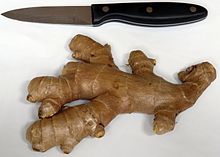 अदुवा Ginger |  छोटा अलैची Green Cardamom |  बडा अलैची Black Cardamom |  Coriander Seed |
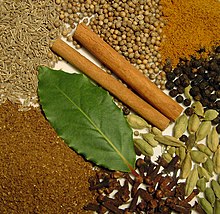 बाह्र मसला Spice Mixture |  दालचीनी Cinnamon |  हरियो धनिया Coriander Leaf |  पिसेको धनिया Coriander Powder |
 गुलाब जल Rose Water |  शक्कर Unrefined Sugar |  जाइफल Nutmeg | 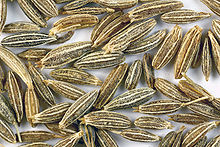 ज़ीरा Cumin seed |
 पिसेको जीरा Cumin Powder |  बिरे नून Black salt |  कालो अलैची Black Cardamom |  मेथी Fenugre |
 तोरी Mustard | 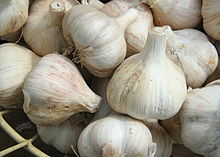 लहसुन Garlic |  लवाँग Cloves |  पुदीना Mint |
 तोरीको तेल Mustard Oil | 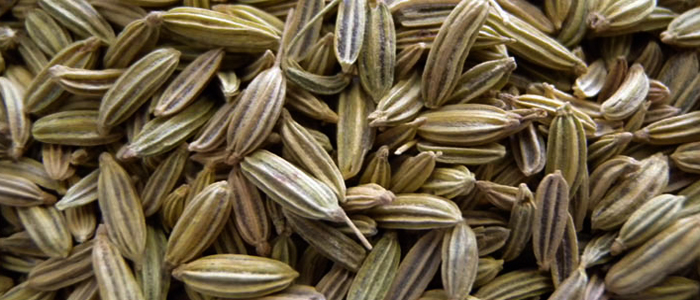 सुप Fennel seed |  तेज पत्ता Malabathrum | 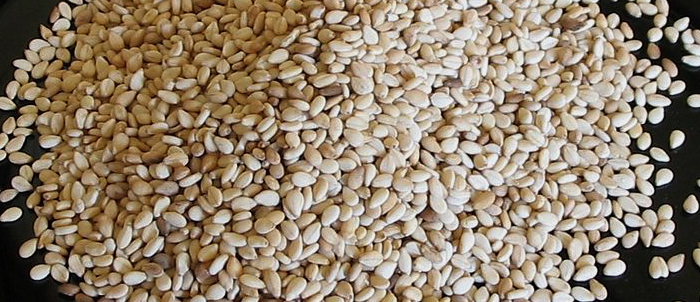 तिल Sesame seed |









 Revel in a day of discovery with our full day excursion to the Ayurvedic Herbal Pharmacies in Banepa and Arubari. Today we will learn about a variety of medicinal herbal and aromatic plants and the way they are used in Ayurveda to help cure and prevent diseases, and promote good health.
Revel in a day of discovery with our full day excursion to the Ayurvedic Herbal Pharmacies in Banepa and Arubari. Today we will learn about a variety of medicinal herbal and aromatic plants and the way they are used in Ayurveda to help cure and prevent diseases, and promote good health. 


No comments:
Post a Comment